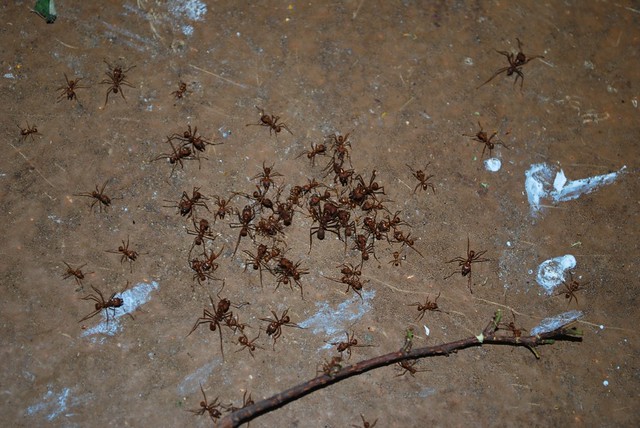During the first week of my internship writing a blog entry on my favorite animals to work with at the zoo would’ve been much simpler than it is now. I would’ve listed the giraffes and Aldabra tortoises as clear favorites, clear and simple. Now, trying to cut a list of 30+ animals down to only a few favorites seems close to impossible. I can honestly say that I enjoy working with (or around, in the case of the alligators and venomous insects) every animal assigned to string 1 and 10.
Observing the leafcutter ants and trying to appease their ever-changing wants in terms of what browse they would and would not eat was always wonderfully challenging, as was watching the interactions between their soldiers and workers. I came to learn the different personalities of our four baby chuckwalla lizards, and enjoyed seeing the clear progress we were able to achieve in our goal to make them easier to handle than their parents. Our Egyptian Goose has much more spunk and attitude than any bird I have ever met, and watching her boss around the visiting mallard ducks and inquisitive eland showed me she was smarter than I admittedly originally believed.
Leafcutter Ants: soldiers (large) and cutters (small)
Our two younger eland practicing their sparring skills.
In the end it would be much more accurate to say I loved working with every animal I had the opportunity to meet, and I was able to appreciate each of them for their own unique traits.






